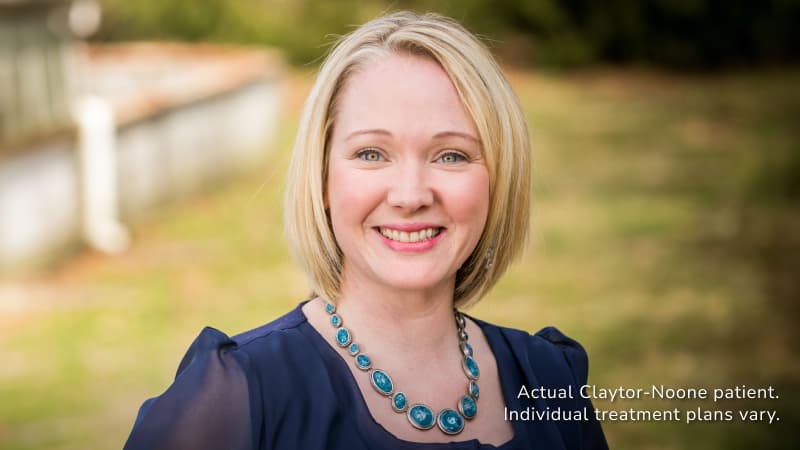Breast Lift (Mastopexy)
The problem of sagging, deflated breasts can arise due to time, gravity, and transformative physical changes such as pregnancy, nursing, and weight gain (or loss). Any combination or single one of these factors contributes to the loss of skin elasticity around the breasts. And as the collagen breaks down in the skin, it can no longer support the firm, perky, high-on-the-chest breast profile you may have had when you were younger. To address these changes and meet your goals for your breast shape and size, Philadelphia board certified plastic surgeon Dr. Brannon Claytor offers breast lift surgery.
What is a breast lift?
Mastopexy, or breast lift, is a surgical procedure for lifting and reshaping sagging breasts. By trimming excess skin and tightening supporting tissue, breasts can be made to sit higher on the chest and be firmer to the touch. In addition, the nipple and areola can be repositioned or resized to further enhance breast appearance. This procedure can be performed alone or in combination with a breast augmentation, which can safely be combined in one operation to help to restore fullness for women who also desire more volume or shape added to their natural breast tissues. Breast lift surgery is also often included in a full mommy makeover—a customized set of procedures, such as breast surgery, tummy tuck, and liposuction—that restores your pre-pregnancy shape.
Dr. R. Brannon Claytor
Dr. Claytor is board certified by the American Board of Plastic Surgery and holds over 20 years of experience as a cosmetic plastic surgeon. An innovator and teacher in the field of plastic surgery, he uses advanced techniques like the drain-free tummy tuck and deep plane facelift to streamline recovery and provide natural-looking, durable results.
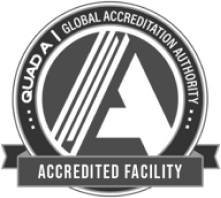
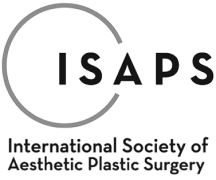
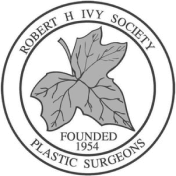
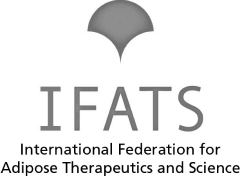
Am I a good candidate for breast lift surgery, or mastopexy?
An eligible breast lift candidate is in good overall health, maintains a stable weight they are happy with, and has realistic expectations about what a breast lift can do for their individual anatomy. Women who choose to undergo this procedure tend to have one or more of the following cosmetic concerns about their breasts:
- Sagging breasts
- Breasts that have lost shape or volume
- Breasts that are flat or elongated
- Nipples which are descended on the chest wall
- Asymmetry
Breast lift procedures are considered to be a safe and effective, but it is critical to consult with a board certification plastic surgeon to know with certainty that you are a good candidate. The best way to determine if you are a good is to schedule your personal consultation at our Main Line office with Dr. Claytor. During this meeting, Dr. Claytor will review your medical history and you will discuss your goals for your breasts. He will examine you and explain what you can expect if you decide to undergo a breast lift with us; his goal is to help set reasonable goals and expectation for the post-operative appearance. You will also have the chance to look at extensive before and after photos of Dr. Claytor’s previous patients to get a sense of what results are possible through this surgery, as well as of Dr. Claytor’s artfulness as a surgeon.
- Key Benefits
- Glossary
- Improved Breast Shape: Breast lift surgery enhances the shape of sagging breasts by lifting and reshaping them.
- Nipple Repositioning: Nipples are repositioned higher on the breast.
- Rejuvenated Appearance: Provides a rejuvenated overall look by reversing the effects of aging and pregnancy on the breasts.
- Customizable Options: We can tailor the procedure to meet individual patient preferences and goals, offering a personalized outcome.
Mastopexy: The medical term for breast lift surgery, designed to elevate and reshape sagging breasts.
Augmentation Mastopexy: Combination of breast lift and augmentation, often using implants.
Crescent Lift: Minimal invasive lift technique, where a small crescent of skin is removed at the top of the nipple.
Anchor Lift (Inverted-T): Technique with three incisions, resembling an anchor, allowing for maximum reshaping.
Vertical Lift (Lollipop): Technique involving two incisions, one around the edge of the areola and another running vertically from the areola to the inframammary fold.
Periareolar Lift (Donut): Technique with a single incision around the areola, suitable for mild to moderate sagging.
Inframammary Fold (IMF): Natural crease beneath the breast where it meets the chest wall.
Capsular Contracture: Complication involving scar tissue that forms around breast implants, causing them to feel firm or hard.
Breast Ptosis: Medical term for sagging of the breasts, a common reason for seeking breast lift surgery.
Seroma: Accumulation of serous fluid in the space created by surgery, a potential postoperative complication.
Hematoma: Collection of blood outside of blood vessels, which may occur after the surgical procedure.
Autologous Tissue: Refers to tissue that is taken from the same individual’s body, often used in reconstructive breast surgery.
Subglandular Placement: Refers to placing the implant above the pectoral muscle but behind the breast tissue.
Submuscular Placement: Refers to placing the implant beneath the pectoral muscle.
Nipple-Areola Complex: Term referring to the nipple and the surrounding pigmented skin.
Breast Symmetry: The balance and proportionality of the breasts’ size and shape.
Breast Implants: Medical devices inserted into the breast to augment their size and shape.
Silicone Implants: Type of breast implant filled with silicone gel.
Saline Implants: Breast implant filled with sterile saline solution.
Recovery Time: The period it takes for a patient to heal postoperatively, varies depending on the individual and type of surgery performed.
Sutures: Stitches used to hold skin and tissue together during the healing process.
Anesthesia: Medication administered to make the patient insensitive to pain during the procedure.
Board-Certified Plastic Surgeon: A surgeon who has received certification from an accredited medical board, ensuring they meet specific education and training standards.
Should women who are pregnant or plan to be pregnant wait before undergoing a breast lift?
Women planning to have children are advised to postpone breast lift surgery since pregnancy and nursing can counteract its effects by stretching the skin. However, the procedure should not affect your ability to breastfeed.
Why choose Dr. Claytor for your plastic surgeon?
Double Board-Certified for a high level of safety and precision
Chief of Plastic Surgery at Main Line Health, a top health system
Board Member of The Aesthetic Society, shaping the future of aesthetics
8x Philadelphia Magazine Top Doctor for exceptional patient care
Recognized as one of America’s Best Plastic Surgeons by Newsweek
Drain-free recovery expert for faster, more comfortable healing
Deep plane facelift innovator and global educator
Active researcher in surgical and non-surgical aesthetic advancements
Highly regarded for his surgical expertise and outcomes, as well as his dedicated follow-up care



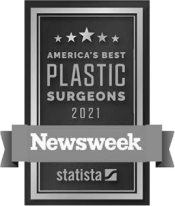
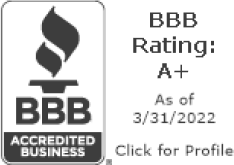
What happens during the breast lift procedure?
Mastopexy is performed on an outpatient basis, meaning that you will be released and go home with a trusted adult the same day as your surgical procedure. Breast lift surgery is performed under general anesthesia, so you will be asleep for the entirety of your procedure. Breast lifts usually take 1 to 2 hours, depending on the details of your procedure and whether or not related procedures are also performed at the same time.
Crisalix 3D Breast ImagingFor patients who choose to combine breast lift with breast augmentation, we use Crisalix 3D breast implant imaging to help you visualize how different breast implants will look on your frame. Crisalix uses a 3D image of your body to take volumetric measurements. Like a virtual fitting room, it then allows you to “try on” different volumes—and see how they look in different types of clothing—while discussing your goals and options with Dr. Claytor. See how it works »
Will I have breast lift scars?
Breast lift patients will have scars from their procedure, but with proper care these can fade over time during the natural healing process. Breast lift scars will likely be around the nipple-areola area where the breast lift incision is located. In cases where more excess skin is needed to be removed, the scar may need to extend vertically down to the inframammary fold and in some cases for an inverted “T” with incisions along the underside of the breast in the inframammary fold.
Where are breast lift incisions located?
Dr. Clayor will use different breast lift techniques that use different incision placements depending on the size and shape of the breasts, as well as the degree of sagging and amount of excess skin. These are three types of incisions commonly used during a breast lift surgery:
- Periareolar incisions: If you have small enough breasts, you may be able to have a single incision around the circumference of the nipple-areolar complex, called a periareolar incision.
- Lollipop incisions: For many patients, in addition to the periareolar incision, another incision is made from the based of the areola extending down to the bottom breast fold.
- Anchor incisions (inverted T incisons): Finally, patients who have a significant amount of ptosis (the clinical term for sagging) will likely require an incision pattern called inverted “T” incisions, or “anchor”-shaped incisions, which extend around the areola, down to the inframammary fold (or the crease along the base of your breasts), and then across the inframammary fold, as well. This incision pattern allows Dr. Claytor to address more ptosis (or drooping) and to remove more soft tissues in order to shape the breast into a firmer, more youthful shape raised higher on the chest wall.
How long is recovery from mastopexy?
For a few days following your mastopexy procedure, you are likely to have bruising, soreness, and swelling. Your breasts will likely be wrapped in an elastic bandage or a surgical bra. You will be able to shower within a few days following surgery. Stitches are usually absorbable, but in some cases you will have sutures that need to be removed during one of your follow-up appointments. Most patients return to work within a week. Exercise and other strenuous activity should be limited for about a month.
Listen to this patient’s experience during her breast lift recovery
Listen to more patent stories »
When will I see breast lift results?
Breast lifts produce immediate results. The new nipple position redefines the shape and aesthetics of the breast with a more youthful appearance.
Before & After Gallery
Dr. Brannon Claytor uses advanced techniques to provide natural-looking outcomes. See the results for yourself in our patient gallery.
Listen to Stories From Dr. Claytor’s Breast Lift Patients
In the following audio stories, Dr. Brannon Claytor engages in conversations with his breast lift patients, providing an authentic exploration of their experiences. From their encounters with anesthesia to the exceptional results, these stories offer insights into what it truly feels like to navigate recovery and results of a breast lift procedure.
Schedule your breast lift consultation with Dr. Claytor todayBoard certified plastic surgeon Dr. Brannon Claytor has over 20 years of experience offering cosmetic plastic surgery procedures, and serves patients from Philadelphia, Bryn Mawr, Main Line, and the surrounding areas here at Claytor Noone Plastic Surgery. A member of The Aesthetic Society’s Board of Trustees, the American Society of Plastic Surgeons (ASPS), and a Fellow of the American College of Surgeons (FACS), Dr. Claytor is dedicated to continuously advancing his surgical techniques and teaching his methods to colleagues at national meetings. In addition to his surgical work, Dr. Claytor the Chief of Plastic Surgery for Main Line Health Systems, and is a Clinical Associate Professor at Lankenau Institute of Medical Research.
To learn if a breast lift may be right for you, or to get answers to your questions, please call our Bryn Mawr office near Philadelphia at (610) 527-4833 or contact us online to schedule a personal breast lift consultation with Dr. Claytor. We look forward to helping you reach your goals!
References »
W. Grant Stevens, David A. Stoker, Mark E. Freeman, Suzanne M. Quardt, Elliot M. Hirsch, Mastopexy Revisited: A Review of 150 Consecutive Cases for Complication and Revision Rates, Aesthetic Surgery Journal, Volume 27, Issue 2, March 2007, Pages 150–154, https://doi.org/10.1016/j.asj.2006.12.014
W. Grant Stevens, Michelle Spring, David A. Stoker, Mark E. Freeman, Robert Cohen, Suzanne M. Quardt, Elliot M. Hirsch, A Review of 100 Consecutive Secondary Augmentation/Mastopexies, Aesthetic Surgery Journal, Volume 27, Issue 5, September 2007, Pages 485–492, https://doi.org/10.1016/j.asj.2007.07.003
Pferdehirt R, Nahabedian MY. Finesse in Mastopexy and Augmentation Mastopexy. Plastic and Reconstructive Surgery. 2021 Sep 1;148(3):451e-461e. doi: 10.1097/PRS.0000000000008303.
Austin RE, Saheb-Al-Zamani M, Lista F, Ahmad J. Periareolar Augmentation-Mastopexy. Aesthetic Surgery Journal. 2019 Aug 22;39(9):953-965. doi: 10.1093/asj/sjz128.
Areas Served:

Medically reviewed by Dr. R. Brannon Claytor — Updated on Oct 28, 2024

